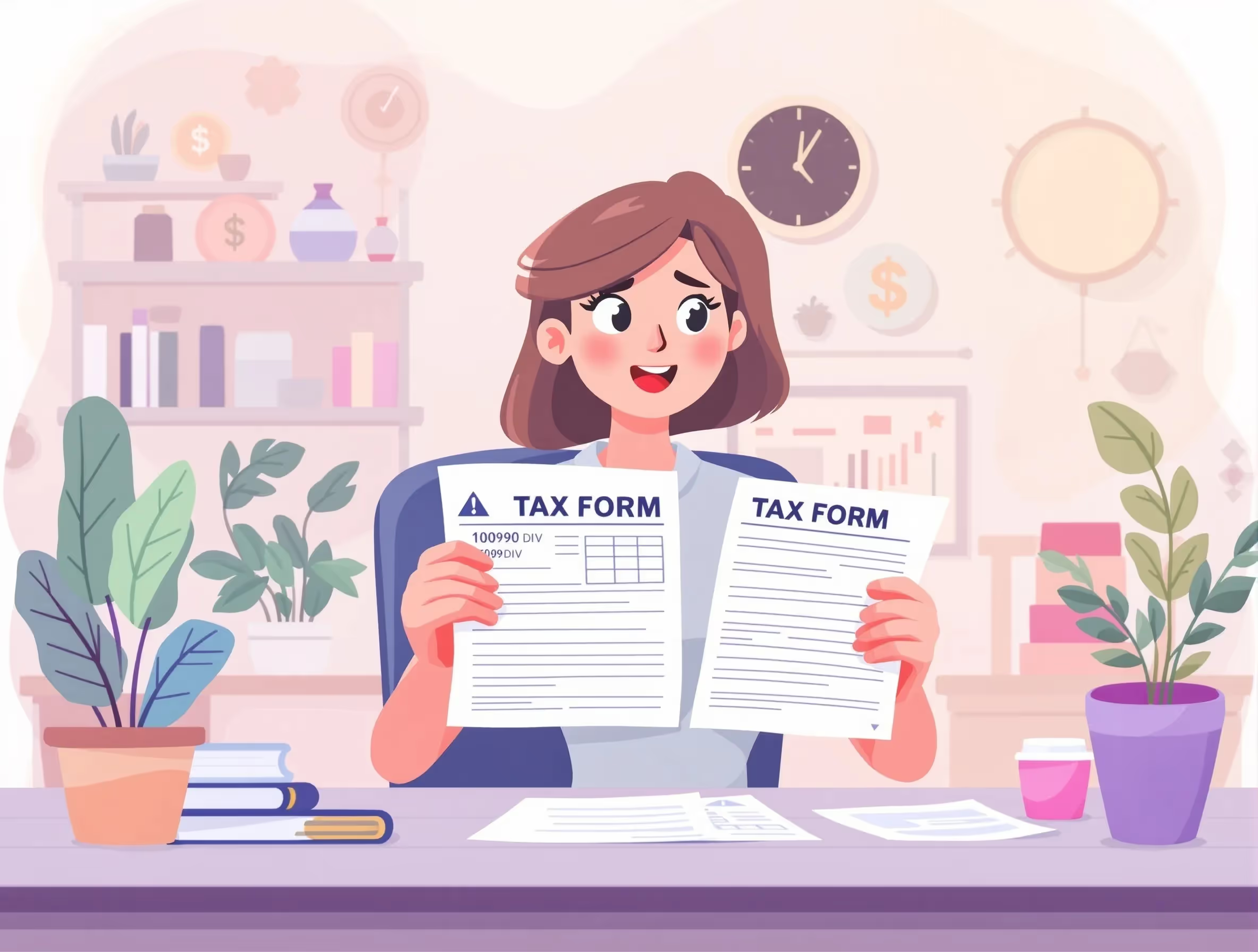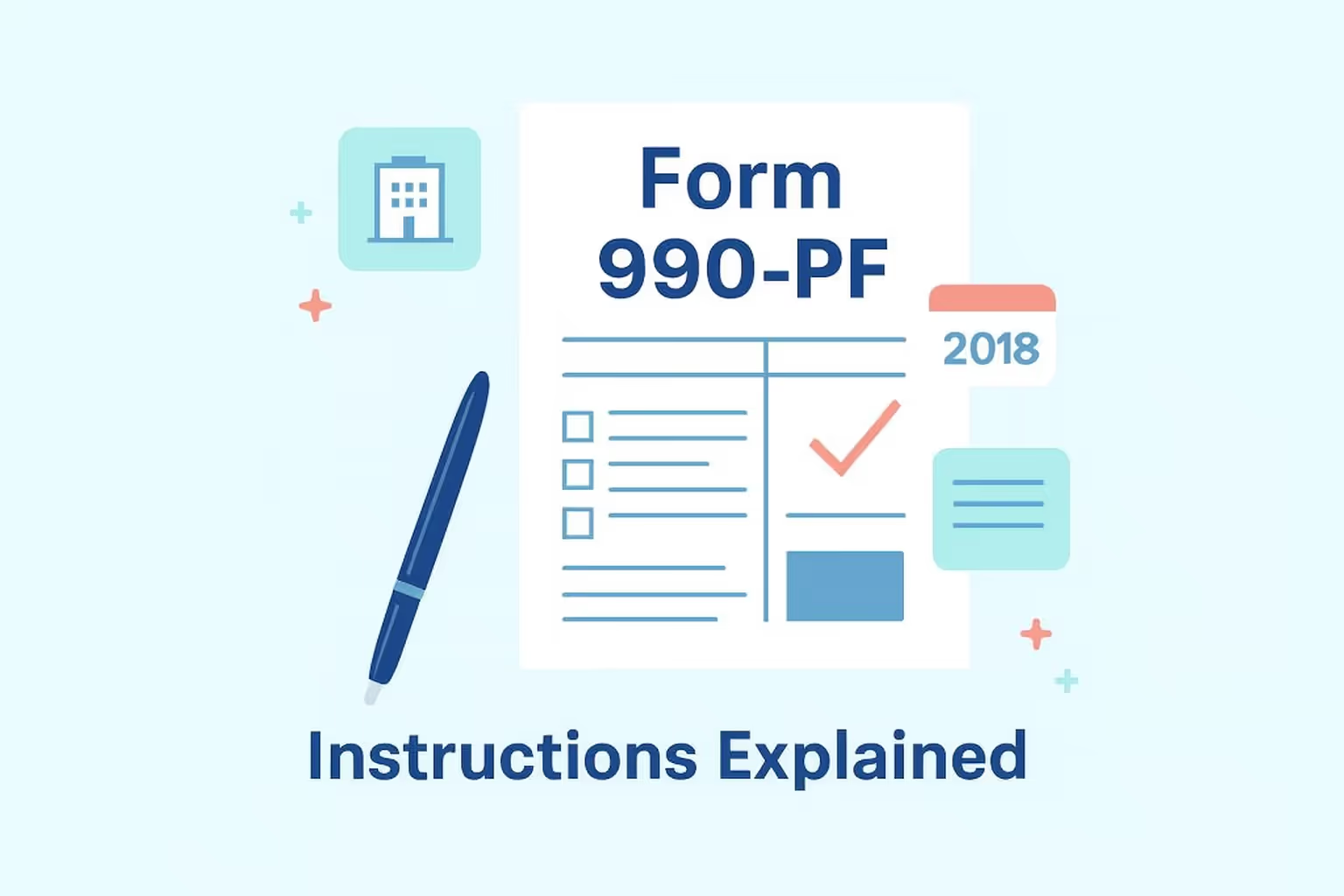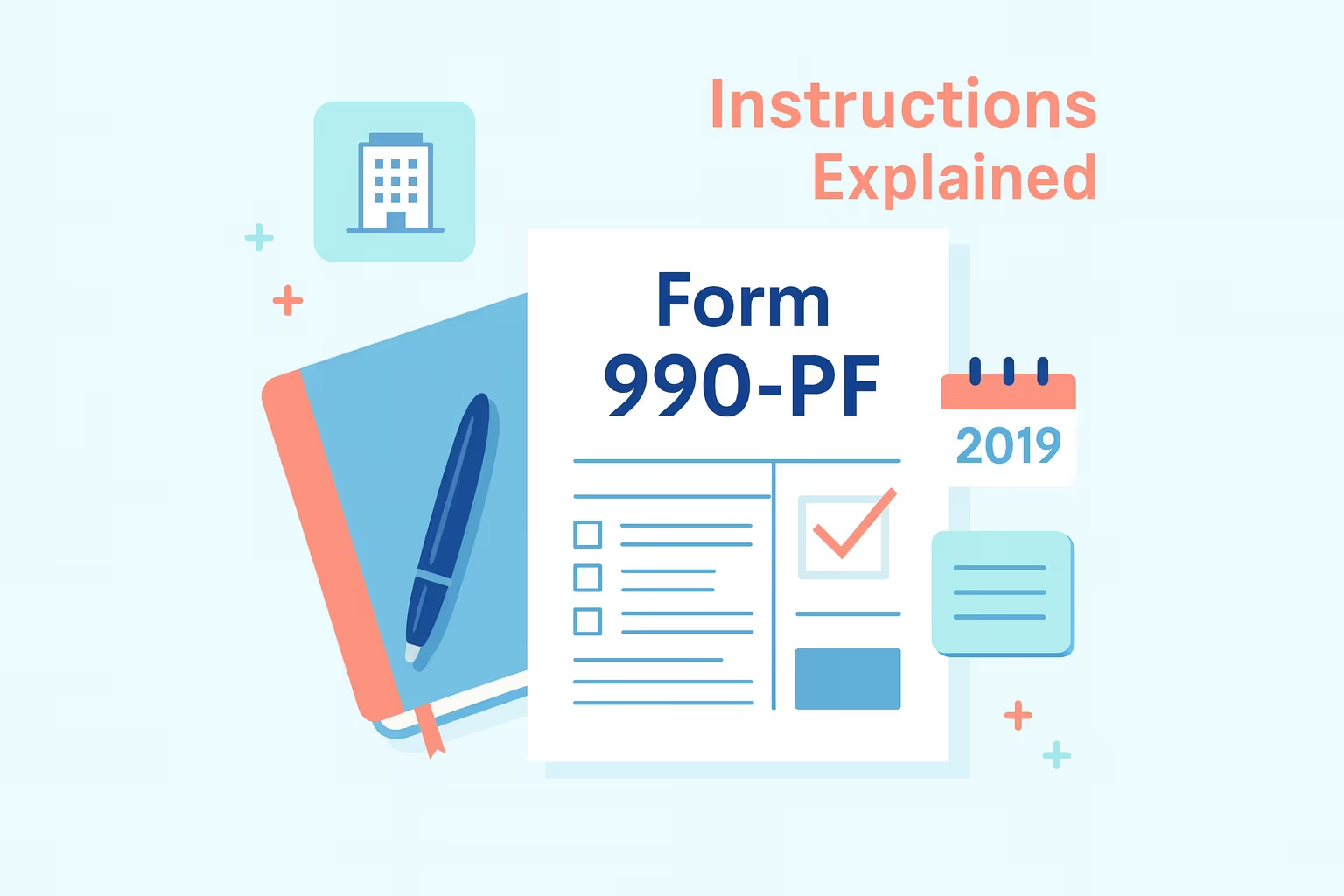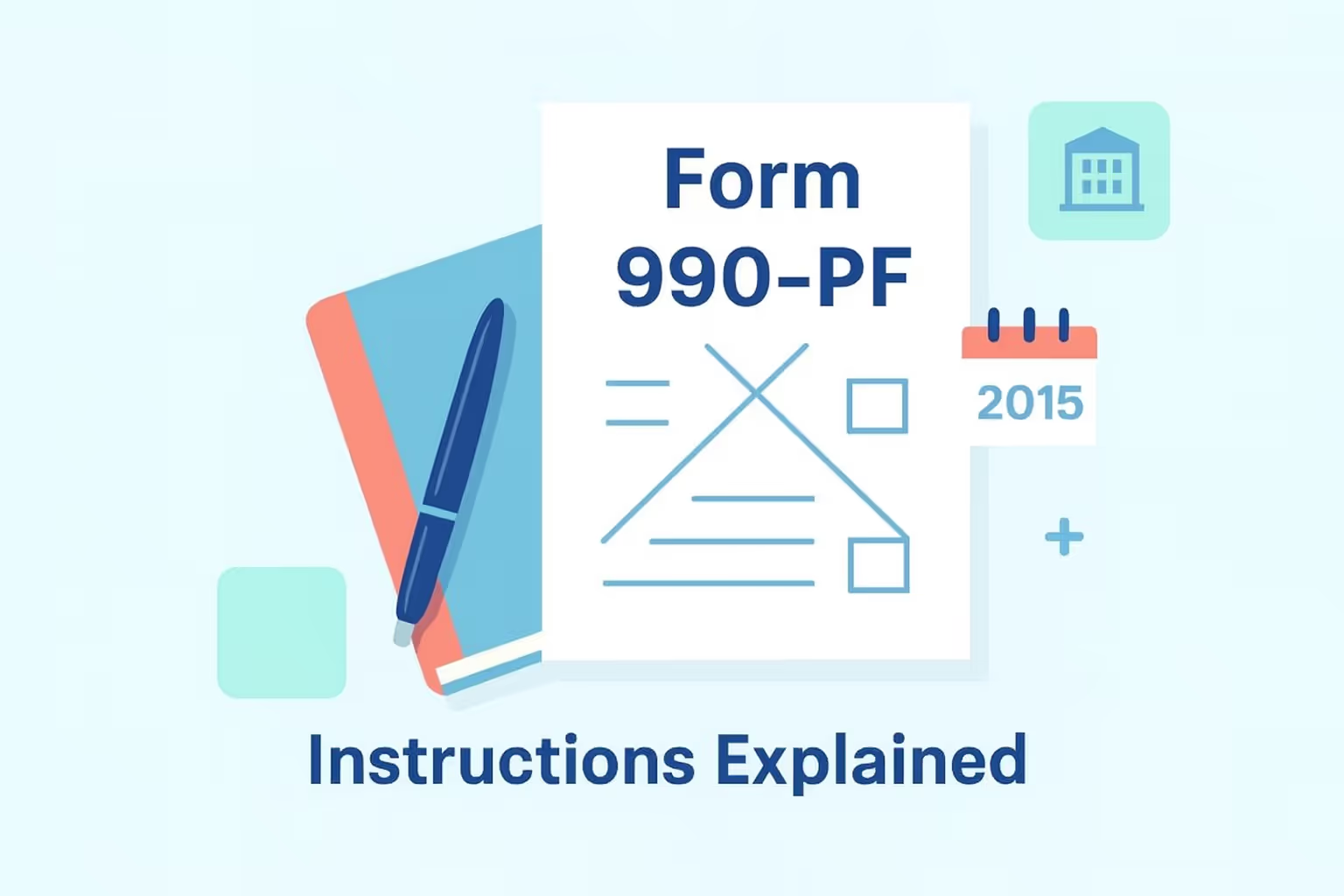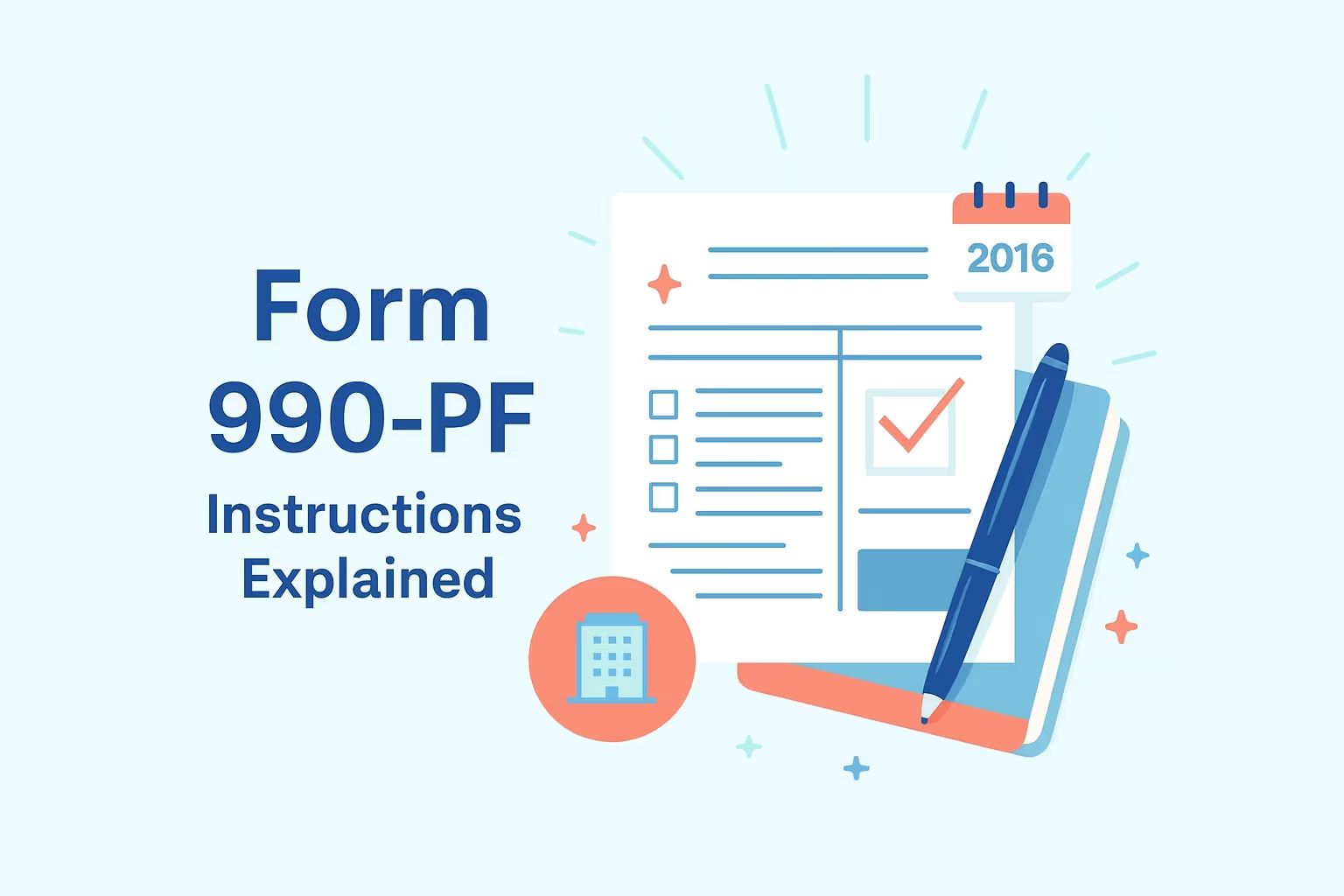
What IRS Form 990-PF (2021) Is For
Form 990-PF is the annual return required for every private foundation and any nonexempt charitable trust treated as a foundation. It reports net investment income, calculates the excise tax based on that income, and documents charitable distributions made for charitable purposes. The Internal Revenue Service uses the form to confirm that foundations comply with rules regarding minimum investment return, undistributed income, qualifying distributions, and public inspection requirements. It also ensures that adjusted gross income, sources of gross income, and amounts of investment income are reported accurately for the tax year.
When You’d Use IRS Form 990-PF (2021)
You must file this return if your organization operated as a private foundation or private operating foundation during the 2021 tax year beginning January 1, 2021. Late or amended filings apply when earlier submissions contained errors, omitted investment income details, or missed filing deadlines. Foundations with rental income, unemployment compensation amounts, dividends, mutual funds, bonds, or investments in foreign countries must report each portion correctly to avoid penalties. Amended filings are permitted whenever tax liability changes due to figure corrections or updated tax advice.
Key Rules or Details for 2021
- Excise tax rate: The tax based on net investment income uses a flat 1.39 percent rate, and foundations must calculate it using all income considered net investment income. This ensures accurate income taxes.
- Minimum payout requirement: Foundations must distribute a certain amount to meet their distributable amount rules, which depend on net assets and prior year fund balance. This prevents undistributed income problems.
- Record requirements: Foundations must keep detailed financial instrument support for financial instruments, investments, administrative expenses, and charitable distributions. This documentation supports accurate filing and helps avoid penalties.
- Public disclosure: Each form remains subject to public inspection requirements, and foundation managers must ensure that all information is available for review. This transparency allows the public to examine grants and expenses.
- Accurate income reporting: Foundations must include dividends, capital gains, capital losses, rental income, wages, and interest as gross income. This ensures investment income totals meet IRS rules for the taxable year.
- Threshold accuracy: Filers must understand certain thresholds for married filing jointly or single filer categories when calculating the modified adjusted gross income and filing status MAGI threshold. Accurate thresholds prevent incorrect Medicare taxes or estimated tax figures.
Browse more tax form instructions and filing guides in our Forms Hub.
Step-by-Step (High Level)
Step 1: Gather records
Collect all records for the tax year, including investment income statements, mutual fund reports, capital gains details, rental income information, and administrative expenses. Confirm that gross income, adjusted gross income, adjusted net income, and fund balance figures match foundation books and prior filings.
Step 2: Confirm the correct tax-year form
Use the official 2021 version of Form 990-PF and review IRS instructions carefully. Verify that all numbers reflect the tax year beginning in 2021, including excise tax amounts, distributable amount figures, and any qualifying person information tied to the foundation.
Step 3: Complete required schedules
Prepare all schedules supporting charitable purposes, including qualifying distribution details and carried-forward amounts from previous year filings. Include grants, wages, expenses, investments, administrative expenses, and funds distributed to a public charity or foreign country organization.
Step 4: File electronically
Submit the return using IRS-approved e-file software. Electronic filing ensures that the Internal Revenue Service receives accurate amounts, verifies the tax liability, and records all relevant portions of income taxes and excise taxes without delay.
Step 5: Retain copies and documentation
Keep complete copies of the return, worksheets, and tax advice for a minimum of five years. Maintain clear support for financial instruments, net investment income calculations, and qualifying distributions so that the foundation can respond to any IRS questions or disputes regarding figures.
Learn more about federal tax filing through our IRS Form Help Center.
Common Mistakes and How to Avoid Them
- Incorrect income totals: Some filers miscalculate investment income or capital gains by overlooking interest or dividends. Reviewing all financial instruments ensures accurate reporting and prevents errors in tax liability.
- Missed payout amounts: Foundations sometimes misjudge the distributable amount rules. Confirming the minimum investment return requirement ensures that qualifying distributions meet the proper amount.
- Wrong excise tax calculation: Filers may apply outdated rates. Using the correct tax based on net investment income helps avoid penalties and ensures accurate tax owed.
- Record gaps: Missing documentation for expenses or grants causes filing delays. Keeping organized records helps foundation managers respond quickly to Internal Revenue Service requests.
- Late filing: Missing deadlines results in added money owed. Filing early and reviewing all subject information prevents avoidable penalties.
- Incorrect classification: Some organizations misidentify themselves as a public charity instead of a private foundation. Confirming foundation status ensures the correct form, schedules, and figures appear on the return.
Learn more about how to avoid business tax problems in our guide on How to File and Avoid Penalties.
What Happens After You File
The Internal Revenue Service processes most electronically filed forms within several weeks and reviews each portion of income, expenses, and investments. If your foundation owes taxes or penalties, the IRS sends a notice explaining the amount due and outlining the payment options available. You may receive requests for additional documentation if figures appear unclear or exceed certain thresholds. Any adjustments affecting net investment income, qualifying distributions, or undistributed income may require updated information or a later amended filing.
For more resources on filing or understanding prior-year IRS forms, visit our guide on Nonprofit & Exempt Organization Forms.
FAQs
How does IRS Form 990 for 2021 define investment income for reporting?
Investment income encompasses dividends, interest, capital gains, rental income, and earnings from mutual funds. Foundations must report every portion considered net investment income to ensure proper excise tax calculation and gross income accuracy.
How does the form treat capital gains for income tax and excise tax purposes?
Capital gains are included in net investment income and adjusted net income. Foundations must consist of both profits and capital losses to calculate excise tax, investment income totals, and overall tax liability for the taxable year.
How does Form 990-PF handle adjusted gross income and gross income sources?
Adjusted gross income reflects income after specific reductions, while gross income includes dividends, wages, interest, rental income, and mutual funds. Accurate reporting ensures the Internal Revenue Service receives correct information used for figures tied to foundation rules.
How does the form calculate adjusted net income for minimum investment return?
Adjusted net income begins with gross income and subtracts certain expenses. Foundations use this figure to help determine the minimum investment return and the amount required for qualifying distribution rules.
How does the form apply estimated tax rules for foundations?
Estimated tax may apply if excise tax or income taxes exceed certain thresholds. Calculating accurate investment income, distributable amount totals, and minimum investment return figures helps avoid penalties related to underpayment.
How is the excise tax determined for foundations that want to avoid penalties?
Excise tax depends on net investment income reported for the tax year. Ensuring accurate calculations and checking all financial instruments helps foundations avoid penalties and remain fully compliant.
How do foundation managers calculate the distributable amount for qualifying distributions?
Foundation managers calculate the distributable amount using net assets, fund balance, previous year values, and minimum investment return. Correct figures ensure that qualifying distributions meet the required levels and prevent issues with undistributed income.






